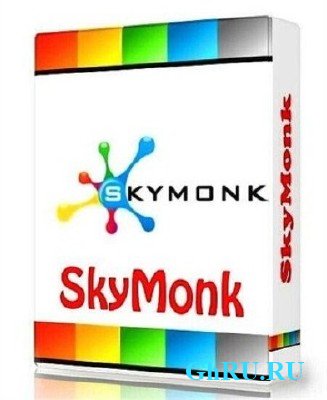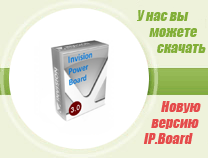Реклама
Популярные статьи
Наш чат
Облако тегов
Girls, mix, OS, Portable, Sexy, soft, аудио, Видео, видеокурс, графика, Девки, девушки, документальное, документальный, Женщины, инструменты, Интернет, картинки, Клипарты, Красотки, музыка, обои, обработка, ОБучающее видео, Операционная система, ОС, Передача, программа, программы, редактор, Сборник, секси, Система, Скачать, Скачать видеоурок, СОФТ, фото, фотошоп, эротика, эффектыПоказать все теги
Реклама
Реклама
Фото хостинг
Случайная новость
SkyMonk 1.73
SkyMonk - удобная и простая программа предназначена для скачивания без ожидания с файлообменников Le...
Читать далее
Топ пользователей

|
kopterka2 ICQ: -Не указано- Публикаций: 9032 |
|
|
Lena_1981r ICQ: -Не указано- Публикаций: 2727 |

|
super-boy ICQ: -Не указано- Публикаций: 1799 |

|
olegfilimonow ICQ: -Не указано- Публикаций: 1717 |

|
groza280283 ICQ: 594312595 Публикаций: 1534 |
Статистика
Всего 27208 новостейСегодня добавили 0 новостей
Всего 43993 юзера
А за сегодня 0 юзеров
Кто онлайн
Сейчас на сайте: 351
Гостей: 350
отсутствуют
отсутствуют
Гостей: 350
Пользователи:
отсутствуют
Роботы:
Последние посетители:
отсутствуют
Календарь
| Пн | Вт | Ср | Чт | Пт | Сб | Вс |
|---|---|---|---|---|---|---|
У нас искали
На 8-Марта
Avid - Sibelius 7.1.3 x86+x64 (WIN+ Mac OSX) [26.09.2012] + Crack
![Avid - Sibelius 7.1.3 x86+x64 (WIN+ Mac OSX) [26.09.2012] + Crack Avid - Sibelius 7.1.3 x86+x64 (WIN+ Mac OSX) [26.09.2012] + Crack](/uploads/posts/2012-10/1349084266_ovtvlqkyadnw5db.jpeg)
Sibelius - это профессиональный нотный редактор для написания, воспроизведения, печати и публикации музыкальных партитур. В рамках данного продукта можно создавать собственный музыкальный CD диск и публиковать музыку в Интернете.
Год: 2012
Размер: 1.28 Гб
Разработчик: Avid
Версия: 7.1.3
Дата Выпуска: 26.09.2012
Таблетка: Интегрирована / Присутствует (WIN версия теперь с лекарством от R2R.)
Платформа: WIN/OSX - 32Bit 64Bit
Релиз-группа: R2R / DYNAMiCS
Системные требования
Minimum requirements for Sibelius 7 software only
Windows: Windows XP SP3 (32-bit only), Windows Vista SP2 with the Platform Update Pack or later, Windows 7 SP1 or later, 1 GB+ RAM, 750 MB hard disk space, DVD-ROM drive
Mac: Mac OS X 10.6.7 or later, Mac OS X 10.7, 1 GB+ RAM, 750 MB hard disk space, DVD-ROM drive
* You can use Sibelius 7 Sounds if your computer doesn't meet the recommended requirements, but you may find that you cannot use as many sounds simultaneously, and that sounds take a long time to load.
Sibelius имеет интуитивный интерфейс и огромное количество функциональных возможностей (выбор из 1700 высококачественных шаблонов, звуков, инструментальных партий, лирики и т.п.).
Особенности программы:
- Задачно-направленный интерфейс. Новый пользовательский интерфейс Sibelius 7 состоит из задачно-нацеленных вкладок, которые ведут вас через процесс сотворения композиций от начала до конца. Каждая функция имеет графическую иконку и текстовое описание, доступ к которому Вы сможете получить по нажатию кнопки либо сочетания клавиш — с полной контекстной справкой доступной тогда, когда вы в ней нуждаетесь.
- Профессиональная звуковая библиотека. Sibelius 7 включает более чем 38 ГБ мастерски сделанного контента, в том числе специально записанного симфонического оркестра, рок и поп инструментов, и многое другое. Этот эксклюзивный контент доступен лишь в Sibelius 7.
- Полная поддержка 64-битной архитектуры. Сегодня 64-разрядное оборудование и операционные системы предоставляют большие преимущества в скорости и использованию оперативной памяти. Sibelius 7 является первым в мире 64-разрядным нотным редактором, позволяя Вам разблокировать всю мощь 64-битной системы — и работать резвее, с большим количеством виртуальных инструментов и эффектов, чем когда-либо раньше.
NFO WIN
--- Avid.Sibelius.v7.1.3.77 ---
--- ---
--- ---
--- SUPPLiER : TEAM R2R | DATE : 2012.09.29 ---
--- CRACKER : TEAM R2R | NUMBER : R2R-0263 ---
--- PACKAGER : TEAM R2R | TYPE : RETAiL, PATCH ---
--- | DiSK : 11 x 50MB ---
--- ---
--- PLATFORM : WiN32/64 ---
---- LANGUAGE : CN, FR, EN, GR, JP, SP, IL ----
---- PROTECTiON : SERiAL/ACTiVATiON ----
--- 1.Unrar and install. ---
--- 2.Use our generic patch. ---
--- 3.Enjoy! ---
NFO Mac OSX
Avid.Sibelius.v7.1.3.MAC.OSX.INTEL-DYNAMiCS
SUPPLiER..: Team DYNAMiCS DiSKS...: 50 * 15MB
CRACKER...: Team DYNAMiCS DATE....: 0928 2011
PACKAGER..: Team DYNAMiCS RELEASE#: DYNAMiCS-809
PROTECTION: Gone FORMAT..: OSX/Intel
Unpack, Install
Enjoy
Remember to BUY the stuff if you USE it.
Что нового в версии 7.1.3?
Platform support
Sibelius 7.1.3 is supported on Mac OS X 10.8 Mountain Lion.
Sibelius now has initial support the Retina Display found on the latest models of the Apple MacBook Pro. The score, all text in dialogs etc. are all drawn at the appropriate resolution for the Retina Display. All graphics on the ribbon, in Backstage (i.e. the File tab), and in the Quick Start window are also now also drawn at double the resolution for optimal appearance on the Retina Display. Only the Keypad, Mixer, Fretboard, Keyboard and Ideas windows do not currently support the Retina Display (though the small text on the Mixer is much clearer on the Retina Display).
Sibelius is now signed with an Apple Developer Certificate, which satisfies the requirement of the Gatekeeper system, under Mac OS X 10.8 Mountain Lion, that all applications must be signed with an Apple-approved certificate.
Sibelius’s installer is now also signed with an Apple Developer Certificate.
Look and feel
Both the System ID and Activation ID of your copy of Sibelius are now displayed directly on the File > Help Backstage page, so you do not need to launch Avid License Control to find these important pieces of information.
Stability improvements
Sibelius no longer crashes if you quit the application when Use virtual instruments and effects is switched off in Audio Engine Options, accessed via Playback Devices.
Sibelius no longer crashes when exporting a MusicXML file when it encounters an explicit normal barline in the score.
Sibelius no longer crashes if you attempt to show the Inspector when no document is open.
Sibelius no longer crashes if you attempt to open another score when Sibelius is running in full screen mode and an empty document window is shown (Mac only).
Sibelius no longer crashes if you create any non-note object (e.g. a clef change, special barline etc.) at the end of the bar while using Note Input > Note Input > Re-input Pitches and then attempt to continue inputting notes.
Sibelius no longer crashes when you attempt to open a score from the blank document that appears when the Quick Start window is not shown at start-up (Windows only).
Sibelius no longer crashes after extended periods of use in which a lot of text objects (e.g. lyrics or chord symbols) are edited (Windows only).
Sibelius no longer crashes if you delete all the staves from the score when the note input caret is visible.
Sibelius no longer crashes or hangs when using the Get Score feature in File > Teaching > Classroom Control.
Clicking very close to the flashing cursor when the text editor is open in order to close the text editor no longer causes a crash.
Various other stability improvements.
Quick Start
Keyboard navigation in the Quick Start window has been improved, especially on the Recent and New Score pages. You can now type Ctrl+F (Windows) or Command-F (Mac) to move the focus into the search box, then hit Tab to move the focus into the thumbnails pane, move around the pane with Tab and Shift-Tab, select the score with Space (to show the more information pane at the bottom of the thumbnails pane), and open the score with Return.
The Quick Start window is now correctly closed if it is shown when you open a score via the operating system (e.g. by double-clicking an icon in Windows Explorer or the Finder), just as it is hidden after you open a score via the Quick Start itself.
The colors used for mouse-over and highlight states for the thumbnails on the New Score and Recent pages in the Quick Start have been improved.
Some cosmetic problems with the way the search widget on the New Score and Recent pages is drawn have been fixed (Mac only).
Sibelius now maintains a maximum of 500 recent scores and other documents (except for those pinned in File > Recent, which are maintained in addition to the total of 500 scores), which prevents the performance of the application degrading during start-up and when opening the File > Recent Backstage page.
When Sibelius starts up and the Quick Start is not shown, the blank document that is created now respects the user’s choice of default paper size (as set on the Files page of Preferences).
Printing
When printing to a PDF printer driver (e.g. Adobe Acrobat), Sibelius now produces PDF files with correctly embedded fonts, rather than rendering all glyphs as paths in the resulting PDF (Windows only).
A problem whereby the previously chosen printer was not always correctly restored when returning to the File > Print page during a Sibelius session has been fixed.
Sibelius no longer crashes when attempting to print to certain HP printers (Windows only).
Playback
Playback of attached video and audio files (via Play > Video > Add Video) is now synchronized much more accurately (Mac only). For optimal results, use uncompressed audio (e.g. AIFF or WAV rather than MP3) or video, since this allows the time position in the attached file to be returned and set with much greater accuracy.
Editing the mapping of an unpitched percussion staff type now correctly invalidates the playback routing, so that the percussion staff plays back correctly once you finish editing the staff type and return to the score.
Setting a manual repeat sequence in Play > Interpretation > Repeats no longer causes the bar numbering in the score to go wrong if Count repeats on the Bar Numbers page of Engraving Rules is switched off.
It is once again possible to type into the Wordbuilder text editor in the EastWest Play virtual instrument (64-bit, Mac only).
Exporting audio
Audio files exported from Sibelius no longer insert one beat’s worth of silence at the start of the file before the first note is played.
Exporting MusicXML files
A problem whereby notes could have incorrect default-x values if the bar to which they belong contain a change of time or key signature has been fixed.
The export of chord symbols has been overhauled, and a wider range of the chord types understood by Sibelius are now exported in MusicXML. (Note that if you import such extended chord types into Finale, the resulting chord symbols in Finale may be considerably more verbose than the chord symbols in Sibelius, due to the way Finale represents these extended chord types.)
Hidden bar rests are now exported in MusicXML files.
Exporting PDF files
A problem whereby a slur that crosses a page break may incorrectly change direction on the second page when printing or exporting a PDF has been fixed.
When choosing All parts only (separate files) in File > Export > PDF, the full score is no longer incorrectly also exported.
Exporting a PDF file from a score that uses a raster font will no longer crash (Windows only).
Keyboard shortcuts
A problem whereby a keyboard shortcut assigned to the Chord symbols text style would stop working after the right-click context menu is invoked has been fixed.
Several duplicate key tips in the French- and German-language versions of Sibelius have been resolved.
Music fonts
A problem whereby the upbow articulation in the Inkpen2 font would appear a long distance to the left of the note on which it is supposed to appear has been fixed (Windows only).
Lyrics
Hyphens are now once more correctly centered between syllables, rather than being offset very slightly to the right.
House styles
Importing a house style no longer causes the options on the View tab (in the Invisibles, Rulers and Note Colors groups) to change unexpectedly.
Panorama
When editing a score in Panorama that uses Hide Empty Staves in the normal page view, the score no longer moves vertically unexpectedly.
Slurs
The controls for Scale slur height, Minimum shoulder and Maximum shoulder on the Slurs page of Appearance > House Style > Engraving Rules now correctly accept values between 0% and 200, rather than incorrectly being limited to a maximum of 100.
Wildcards
New \$NumPages\ wildcard, which shows an estimate (correct more often than not!) of the total number of pages in the score, useful for creating text such as “Page x of y”. Because pagination of Sibelius scores is dynamic, the total number of pages in the score may appear to change from time to time as you work on your score. Don’t be alarmed: when you print your score, or export a PDF, the total page count will always be correct.
Plug-ins
Note Input > Transformations > Halve Note Values and Double Note Values now work correctly when run from a dynamic part.
Home > Bars > Split and Join now work correctly when run from a dynamic part.
ManuScript language
New note.IsAccidentalVisible read-only variable for ManuScript, allowing a plug-in to determine whether or not an accidental explicitly appears next to a given note in the score.
New methods and variables for BarObject objects that allow you to specify whether a given object is set to play back on a particular pass through the score, when the score has a repeat structure.
New variables for the Score object that provide access to the order in which bars are played back in scores with repeats.
A problem whereby manipulating individual notes in a chord could cause the index of the note to get out of step, and appear to return properties belonging to a different note of the chord, has been fixed.
New methods for hiding and showing empty staves.
The Score.OptimizeStaffSpacing() method now works correctly in the full score and dynamic parts alike, and can also be called with no parameters to apply to the whole score.
It is now possible to suppress the default text that Sibelius passes to screen reading software for visually impaired users, in order to provide alternative text (Windows only).
New Sibelius.LaunchApplication() method that makes it possible to launch an external application (and pass in arguments) from ManuScript.
Installing Sibelius
On Windows, Sibelius’s installer uses a third party component to check whether or not Sibelius is running at the same time that you are trying to run the installer or updater. On some computers this check causes an unexpected error message concerning the use of an unsigned driver (installed by another application running on your system). Normally you can simply click Continue Anyway and there will be no problem, but if for some reason you cannot continue installation because of this error, use the command line switch /SKIPFILESINUSECHECK=yes to disable the check for running copies of Sibelius.
Activating Sibelius
If Sibelius finds that the location in which it needs to store information relating to the program’s activation is not writeable (which commonly occurs after using the Migration Assistant to copy programs and settings from one Mac to another, for example), Sibelius attempts to fix the permissions on the required location automatically, and if it fails will display an informative message (rather than Unspecified Error 1 as in Sibelius 7.1.2).
Auto Breaks
In Layout > Breaks > Auto Breaks, the value of System must be n% full under Use auto system breaks is now set and restored correctly.
Скриншоты:
Размер: 1.28 Гб
Разработчик: Avid
Версия: 7.1.3
Дата Выпуска: 26.09.2012
Таблетка: Интегрирована / Присутствует (WIN версия теперь с лекарством от R2R.)
Платформа: WIN/OSX - 32Bit 64Bit
Релиз-группа: R2R / DYNAMiCS
Системные требования
Minimum requirements for Sibelius 7 software only
Windows: Windows XP SP3 (32-bit only), Windows Vista SP2 with the Platform Update Pack or later, Windows 7 SP1 or later, 1 GB+ RAM, 750 MB hard disk space, DVD-ROM drive
Mac: Mac OS X 10.6.7 or later, Mac OS X 10.7, 1 GB+ RAM, 750 MB hard disk space, DVD-ROM drive
* You can use Sibelius 7 Sounds if your computer doesn't meet the recommended requirements, but you may find that you cannot use as many sounds simultaneously, and that sounds take a long time to load.
Sibelius имеет интуитивный интерфейс и огромное количество функциональных возможностей (выбор из 1700 высококачественных шаблонов, звуков, инструментальных партий, лирики и т.п.).
Особенности программы:
- Задачно-направленный интерфейс. Новый пользовательский интерфейс Sibelius 7 состоит из задачно-нацеленных вкладок, которые ведут вас через процесс сотворения композиций от начала до конца. Каждая функция имеет графическую иконку и текстовое описание, доступ к которому Вы сможете получить по нажатию кнопки либо сочетания клавиш — с полной контекстной справкой доступной тогда, когда вы в ней нуждаетесь.
- Профессиональная звуковая библиотека. Sibelius 7 включает более чем 38 ГБ мастерски сделанного контента, в том числе специально записанного симфонического оркестра, рок и поп инструментов, и многое другое. Этот эксклюзивный контент доступен лишь в Sibelius 7.
- Полная поддержка 64-битной архитектуры. Сегодня 64-разрядное оборудование и операционные системы предоставляют большие преимущества в скорости и использованию оперативной памяти. Sibelius 7 является первым в мире 64-разрядным нотным редактором, позволяя Вам разблокировать всю мощь 64-битной системы — и работать резвее, с большим количеством виртуальных инструментов и эффектов, чем когда-либо раньше.
NFO WIN
--- Avid.Sibelius.v7.1.3.77 ---
--- ---
--- ---
--- SUPPLiER : TEAM R2R | DATE : 2012.09.29 ---
--- CRACKER : TEAM R2R | NUMBER : R2R-0263 ---
--- PACKAGER : TEAM R2R | TYPE : RETAiL, PATCH ---
--- | DiSK : 11 x 50MB ---
--- ---
--- PLATFORM : WiN32/64 ---
---- LANGUAGE : CN, FR, EN, GR, JP, SP, IL ----
---- PROTECTiON : SERiAL/ACTiVATiON ----
--- 1.Unrar and install. ---
--- 2.Use our generic patch. ---
--- 3.Enjoy! ---
NFO Mac OSX
Avid.Sibelius.v7.1.3.MAC.OSX.INTEL-DYNAMiCS
SUPPLiER..: Team DYNAMiCS DiSKS...: 50 * 15MB
CRACKER...: Team DYNAMiCS DATE....: 0928 2011
PACKAGER..: Team DYNAMiCS RELEASE#: DYNAMiCS-809
PROTECTION: Gone FORMAT..: OSX/Intel
Unpack, Install
Enjoy
Remember to BUY the stuff if you USE it.
Что нового в версии 7.1.3?
Platform support
Sibelius 7.1.3 is supported on Mac OS X 10.8 Mountain Lion.
Sibelius now has initial support the Retina Display found on the latest models of the Apple MacBook Pro. The score, all text in dialogs etc. are all drawn at the appropriate resolution for the Retina Display. All graphics on the ribbon, in Backstage (i.e. the File tab), and in the Quick Start window are also now also drawn at double the resolution for optimal appearance on the Retina Display. Only the Keypad, Mixer, Fretboard, Keyboard and Ideas windows do not currently support the Retina Display (though the small text on the Mixer is much clearer on the Retina Display).
Sibelius is now signed with an Apple Developer Certificate, which satisfies the requirement of the Gatekeeper system, under Mac OS X 10.8 Mountain Lion, that all applications must be signed with an Apple-approved certificate.
Sibelius’s installer is now also signed with an Apple Developer Certificate.
Look and feel
Both the System ID and Activation ID of your copy of Sibelius are now displayed directly on the File > Help Backstage page, so you do not need to launch Avid License Control to find these important pieces of information.
Stability improvements
Sibelius no longer crashes if you quit the application when Use virtual instruments and effects is switched off in Audio Engine Options, accessed via Playback Devices.
Sibelius no longer crashes when exporting a MusicXML file when it encounters an explicit normal barline in the score.
Sibelius no longer crashes if you attempt to show the Inspector when no document is open.
Sibelius no longer crashes if you attempt to open another score when Sibelius is running in full screen mode and an empty document window is shown (Mac only).
Sibelius no longer crashes if you create any non-note object (e.g. a clef change, special barline etc.) at the end of the bar while using Note Input > Note Input > Re-input Pitches and then attempt to continue inputting notes.
Sibelius no longer crashes when you attempt to open a score from the blank document that appears when the Quick Start window is not shown at start-up (Windows only).
Sibelius no longer crashes after extended periods of use in which a lot of text objects (e.g. lyrics or chord symbols) are edited (Windows only).
Sibelius no longer crashes if you delete all the staves from the score when the note input caret is visible.
Sibelius no longer crashes or hangs when using the Get Score feature in File > Teaching > Classroom Control.
Clicking very close to the flashing cursor when the text editor is open in order to close the text editor no longer causes a crash.
Various other stability improvements.
Quick Start
Keyboard navigation in the Quick Start window has been improved, especially on the Recent and New Score pages. You can now type Ctrl+F (Windows) or Command-F (Mac) to move the focus into the search box, then hit Tab to move the focus into the thumbnails pane, move around the pane with Tab and Shift-Tab, select the score with Space (to show the more information pane at the bottom of the thumbnails pane), and open the score with Return.
The Quick Start window is now correctly closed if it is shown when you open a score via the operating system (e.g. by double-clicking an icon in Windows Explorer or the Finder), just as it is hidden after you open a score via the Quick Start itself.
The colors used for mouse-over and highlight states for the thumbnails on the New Score and Recent pages in the Quick Start have been improved.
Some cosmetic problems with the way the search widget on the New Score and Recent pages is drawn have been fixed (Mac only).
Sibelius now maintains a maximum of 500 recent scores and other documents (except for those pinned in File > Recent, which are maintained in addition to the total of 500 scores), which prevents the performance of the application degrading during start-up and when opening the File > Recent Backstage page.
When Sibelius starts up and the Quick Start is not shown, the blank document that is created now respects the user’s choice of default paper size (as set on the Files page of Preferences).
Printing
When printing to a PDF printer driver (e.g. Adobe Acrobat), Sibelius now produces PDF files with correctly embedded fonts, rather than rendering all glyphs as paths in the resulting PDF (Windows only).
A problem whereby the previously chosen printer was not always correctly restored when returning to the File > Print page during a Sibelius session has been fixed.
Sibelius no longer crashes when attempting to print to certain HP printers (Windows only).
Playback
Playback of attached video and audio files (via Play > Video > Add Video) is now synchronized much more accurately (Mac only). For optimal results, use uncompressed audio (e.g. AIFF or WAV rather than MP3) or video, since this allows the time position in the attached file to be returned and set with much greater accuracy.
Editing the mapping of an unpitched percussion staff type now correctly invalidates the playback routing, so that the percussion staff plays back correctly once you finish editing the staff type and return to the score.
Setting a manual repeat sequence in Play > Interpretation > Repeats no longer causes the bar numbering in the score to go wrong if Count repeats on the Bar Numbers page of Engraving Rules is switched off.
It is once again possible to type into the Wordbuilder text editor in the EastWest Play virtual instrument (64-bit, Mac only).
Exporting audio
Audio files exported from Sibelius no longer insert one beat’s worth of silence at the start of the file before the first note is played.
Exporting MusicXML files
A problem whereby notes could have incorrect default-x values if the bar to which they belong contain a change of time or key signature has been fixed.
The export of chord symbols has been overhauled, and a wider range of the chord types understood by Sibelius are now exported in MusicXML. (Note that if you import such extended chord types into Finale, the resulting chord symbols in Finale may be considerably more verbose than the chord symbols in Sibelius, due to the way Finale represents these extended chord types.)
Hidden bar rests are now exported in MusicXML files.
Exporting PDF files
A problem whereby a slur that crosses a page break may incorrectly change direction on the second page when printing or exporting a PDF has been fixed.
When choosing All parts only (separate files) in File > Export > PDF, the full score is no longer incorrectly also exported.
Exporting a PDF file from a score that uses a raster font will no longer crash (Windows only).
Keyboard shortcuts
A problem whereby a keyboard shortcut assigned to the Chord symbols text style would stop working after the right-click context menu is invoked has been fixed.
Several duplicate key tips in the French- and German-language versions of Sibelius have been resolved.
Music fonts
A problem whereby the upbow articulation in the Inkpen2 font would appear a long distance to the left of the note on which it is supposed to appear has been fixed (Windows only).
Lyrics
Hyphens are now once more correctly centered between syllables, rather than being offset very slightly to the right.
House styles
Importing a house style no longer causes the options on the View tab (in the Invisibles, Rulers and Note Colors groups) to change unexpectedly.
Panorama
When editing a score in Panorama that uses Hide Empty Staves in the normal page view, the score no longer moves vertically unexpectedly.
Slurs
The controls for Scale slur height, Minimum shoulder and Maximum shoulder on the Slurs page of Appearance > House Style > Engraving Rules now correctly accept values between 0% and 200, rather than incorrectly being limited to a maximum of 100.
Wildcards
New \$NumPages\ wildcard, which shows an estimate (correct more often than not!) of the total number of pages in the score, useful for creating text such as “Page x of y”. Because pagination of Sibelius scores is dynamic, the total number of pages in the score may appear to change from time to time as you work on your score. Don’t be alarmed: when you print your score, or export a PDF, the total page count will always be correct.
Plug-ins
Note Input > Transformations > Halve Note Values and Double Note Values now work correctly when run from a dynamic part.
Home > Bars > Split and Join now work correctly when run from a dynamic part.
ManuScript language
New note.IsAccidentalVisible read-only variable for ManuScript, allowing a plug-in to determine whether or not an accidental explicitly appears next to a given note in the score.
New methods and variables for BarObject objects that allow you to specify whether a given object is set to play back on a particular pass through the score, when the score has a repeat structure.
New variables for the Score object that provide access to the order in which bars are played back in scores with repeats.
A problem whereby manipulating individual notes in a chord could cause the index of the note to get out of step, and appear to return properties belonging to a different note of the chord, has been fixed.
New methods for hiding and showing empty staves.
The Score.OptimizeStaffSpacing() method now works correctly in the full score and dynamic parts alike, and can also be called with no parameters to apply to the whole score.
It is now possible to suppress the default text that Sibelius passes to screen reading software for visually impaired users, in order to provide alternative text (Windows only).
New Sibelius.LaunchApplication() method that makes it possible to launch an external application (and pass in arguments) from ManuScript.
Installing Sibelius
On Windows, Sibelius’s installer uses a third party component to check whether or not Sibelius is running at the same time that you are trying to run the installer or updater. On some computers this check causes an unexpected error message concerning the use of an unsigned driver (installed by another application running on your system). Normally you can simply click Continue Anyway and there will be no problem, but if for some reason you cannot continue installation because of this error, use the command line switch /SKIPFILESINUSECHECK=yes to disable the check for running copies of Sibelius.
Activating Sibelius
If Sibelius finds that the location in which it needs to store information relating to the program’s activation is not writeable (which commonly occurs after using the Migration Assistant to copy programs and settings from one Mac to another, for example), Sibelius attempts to fix the permissions on the required location automatically, and if it fails will display an informative message (rather than Unspecified Error 1 as in Sibelius 7.1.2).
Auto Breaks
In Layout > Breaks > Auto Breaks, the value of System must be n% full under Use auto system breaks is now set and restored correctly.
Скриншоты:
Скачать "Avid - Sibelius 7.1.3 x86+x64 (WIN+ Mac OSX) [26.09.2012] + Crack":
Одним файлом Zalivka.com:
Одним файлом Sellfile.net:
Скачать с Letitbit.net:
Одним файлом Shareflare.net:
Одним файлом Sellfile.net:
Скачать с Letitbit.net:
Одним файлом Shareflare.net:
Уважаемый посетитель, Вы зашли на сайт как незарегистрированный пользователь.
Мы рекомендуем Вам зарегистрироваться либо войти на сайт под своим именем.
Мы рекомендуем Вам зарегистрироваться либо войти на сайт под своим именем.
Информация
Посетители, находящиеся в группе Гости, не могут оставлять комментарии к данной публикации.
Посетители, находящиеся в группе Гости, не могут оставлять комментарии к данной публикации.




![Avid - Sibelius 7.1.3 x86+x64 (WIN+ Mac OSX) [26.09.2012] + Crack Avid - Sibelius 7.1.3 x86+x64 (WIN+ Mac OSX) [26.09.2012] + Crack](/uploads/posts/2012-10/1349084257_jhek987rbxt6gk4.jpeg)
 Просмотров: 2363
Просмотров: 2363  Комментариев: (0)
Комментариев: (0)